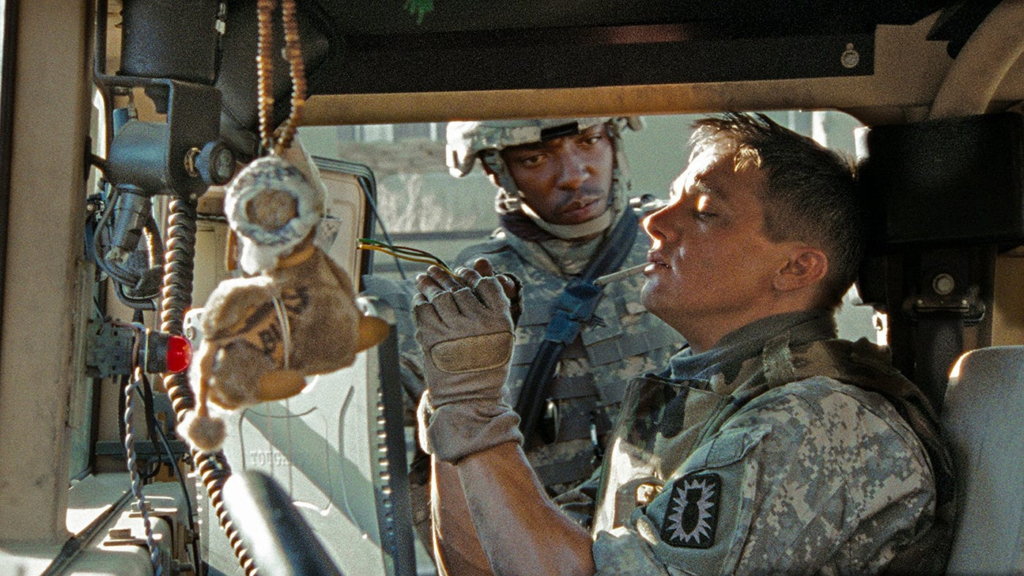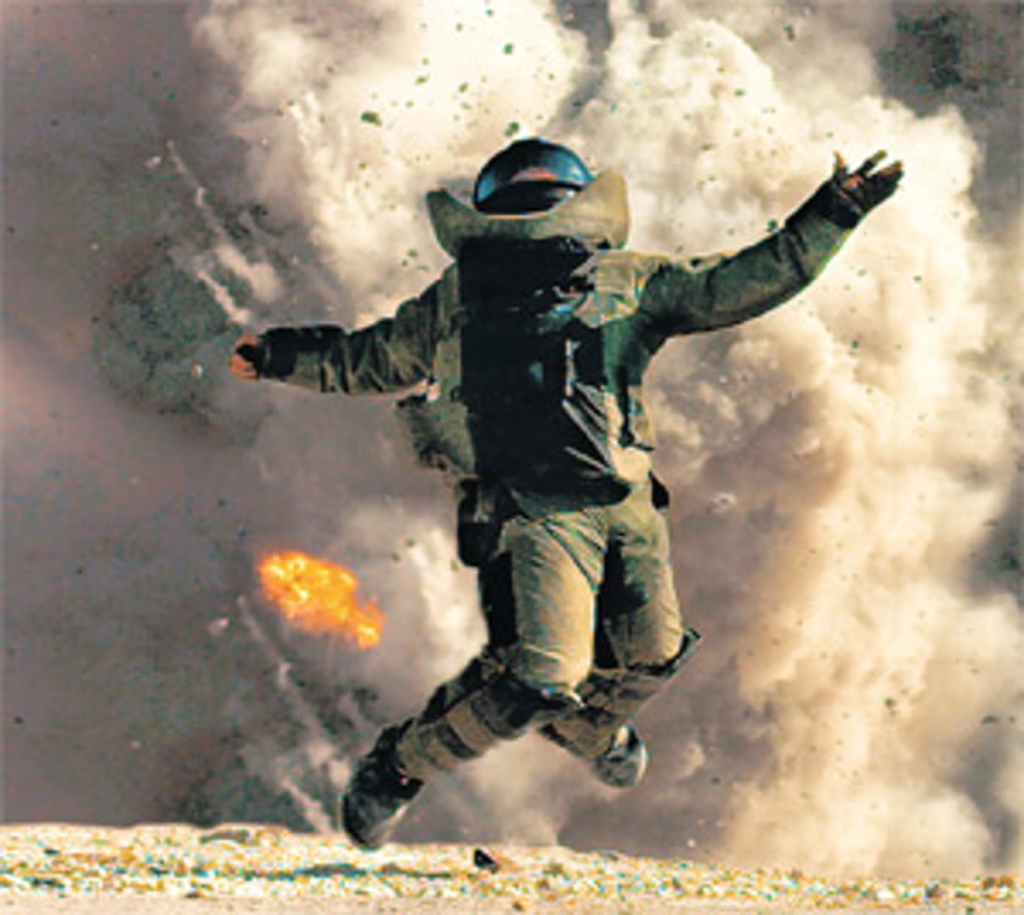Director: Kathryn Bigelow
Writer: Mark Boal
Stars: Jeremy Renner, Anthony Mackie, Brian Geraghty
Synopsis: During the Iraq War, a Sergeant recently assigned to an army bomb squad is put at odds with his squad mates due to his maverick way of handling his work.
The term hurt locker first came about during the Vietnam War. It means a place of deep pain and discomfort. Whose pain and discomfort is determined by the context in which it’s used. In the case of the film The Hurt Locker that can be a complicated answer. Yes, it’s obvious that our protagonists feel the intensity of their explosive ordnance disposal (EOD) prerogative. Yet, it’s also obvious that the people they came to fight for, with, and against, are in it as well. The Iraq War and the War on Terror as a whole was/is an endeavor that costs so much more than it gains. The authenticity of that endlessness, exhaustion, and pain is palpable in every frame of The Hurt Locker.

Screenwriter Mark Boal began his career as a journalist and spent some time embedded with EOD units fighting the War on Terror. His script, while dramatic and affecting, never falls into the patterns that many fictionalized accounts of real conflicts do. He never builds an overarching mastermind, but keeps the terror as anonymous as it is for his characters. He also doesn’t give us one large standoff with an improvised explosive device (IED), but keeps the relentless pace that his characters would have experienced had they actually been there, finding devices day after day after day after day.
There is an utterly brilliant sequence that encapsulates how even as this EOD crew have a job that is constant, there’s an extreme tension in every IED they come across. It starts as the crew gets to their scene without a clue as to where they’re supposed to be working. A squad in an alcove directs their attention down the street. James (Jeremy Renner) immediately gears up in spite of the protestations of Sanborn (Anthony Mackie). As he walks toward the danger, James tosses out a smoke bomb, frustrating Sanborn even more. Then James gets to a point in the road where a taxi breaks through the barrier. James points a pistol at the driver, there’s a stand off with warning shots fired until the driver backs off. Then James finds the IED and disarms it, but as he does he sees another wire. He follows the wire to its middle, which is a web of other wires that he lifts to reveal five more explosives buried there. He quickly dispatches them all while we see the supposed bomber as he runs down the stairs toward where he can make his connection to the detonators via a battery. James shows him the futility of trying and the man drops the battery and runs away.
This sequence is so intense that you might think it would be spread out, but it is one after another after another. It’s so successful in the tension it brings to the film because of the people who put it all together. Editors Bob Murawski and Chris Innis are masters of timing. Especially as the bomber makes his descent. The cuts between him and James are quick and feel like they’re happening as they would be simultaneously and side by side. Those shots are also thanks to cinematographer Barry Ackroyd who is one of the main forces of the cinema vérité style of camera work that was very popular at that time in cinema. Though here, Ackroyd’s camera never feels like a camera, but another set of eyes of the dozens of eyes in every scene, constantly watching. The scene is perfectly concocted and in addition to these creators, has much to do with director Kathryn Bigelow’s sensibilities as well.

Kathryn Bigelow sees masculinity in a way that many male directors can’t. To her it’s from an outsider’s perspective or a behavioral study. Her men are manly and tough, yes, but they also feel far more real than if they had been directed by a man. The Hurt Locker would have been a far different film if not in her hands. James, for all his hot shot bravado, has deep pain inside. Sanborn, for all his desire to be recognized for his capabilities, hates how much he fears this task he has. Eldridge (Brian Geraghty), for all his insecurities, is a more than capable soldier when he’s given a leader who respects him. Bigelow found the depth in Mark Boal’s script and enhanced it as she lingered on a certain shot, or pushed for an emotional bent to a scene. She’s more than adept at showing us a depth to men that many others aren’t attuned to finding.
The Hurt Locker is a tense thriller for its subject matter, but also for its emotional heft. The toll this job puts on soldiers and their personal lives is immense. There is never a moment when the human element is missing from these men and the people they save/thwart. That’s why the film has endured and garnered so much acclaim. Other films like it have never cracked the emotional core of these stories in this way; they’re much shallower dives into stories we feel we know already. The Hurt Locker will stand up as a war film that will define a period for movie watching generations to come.





